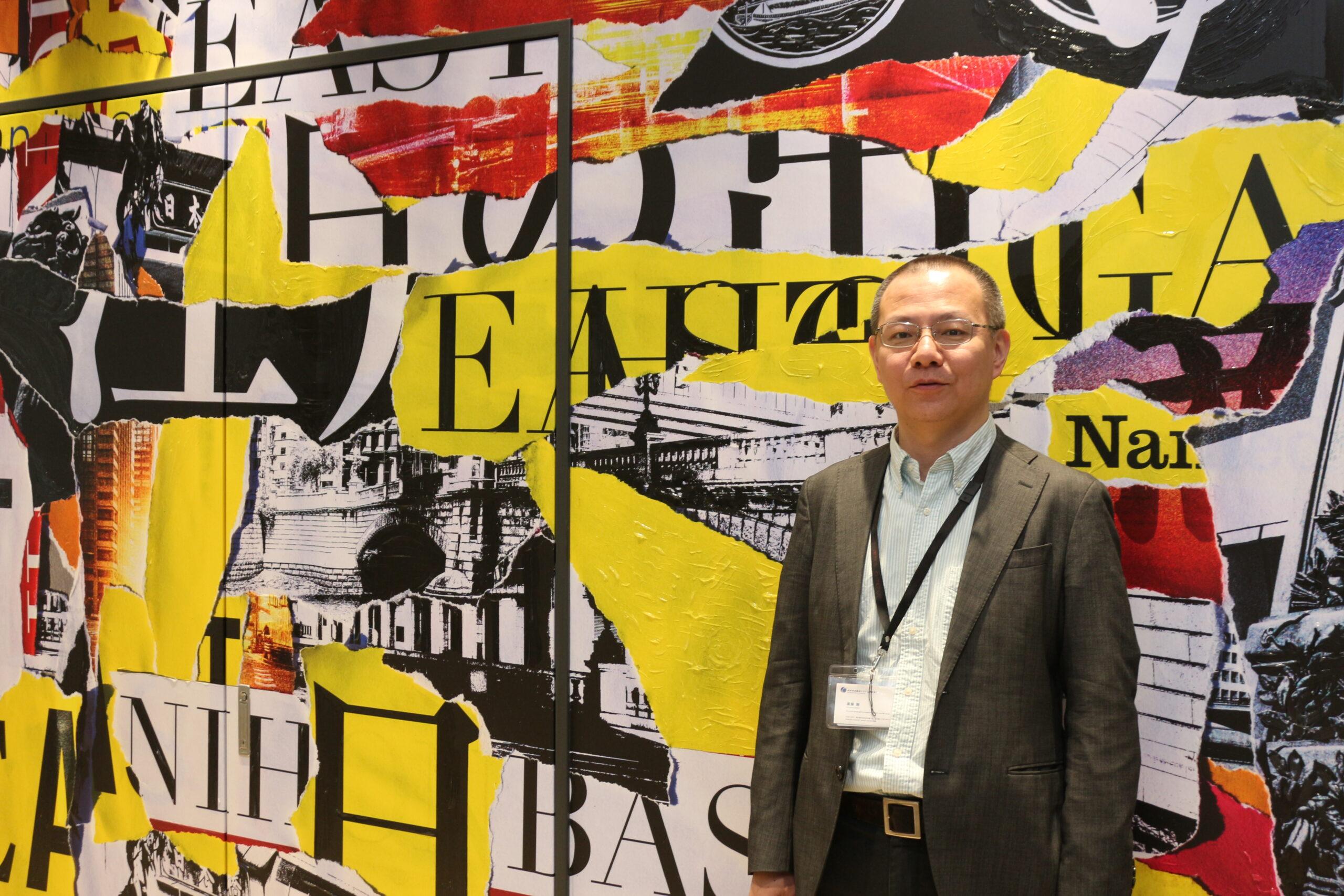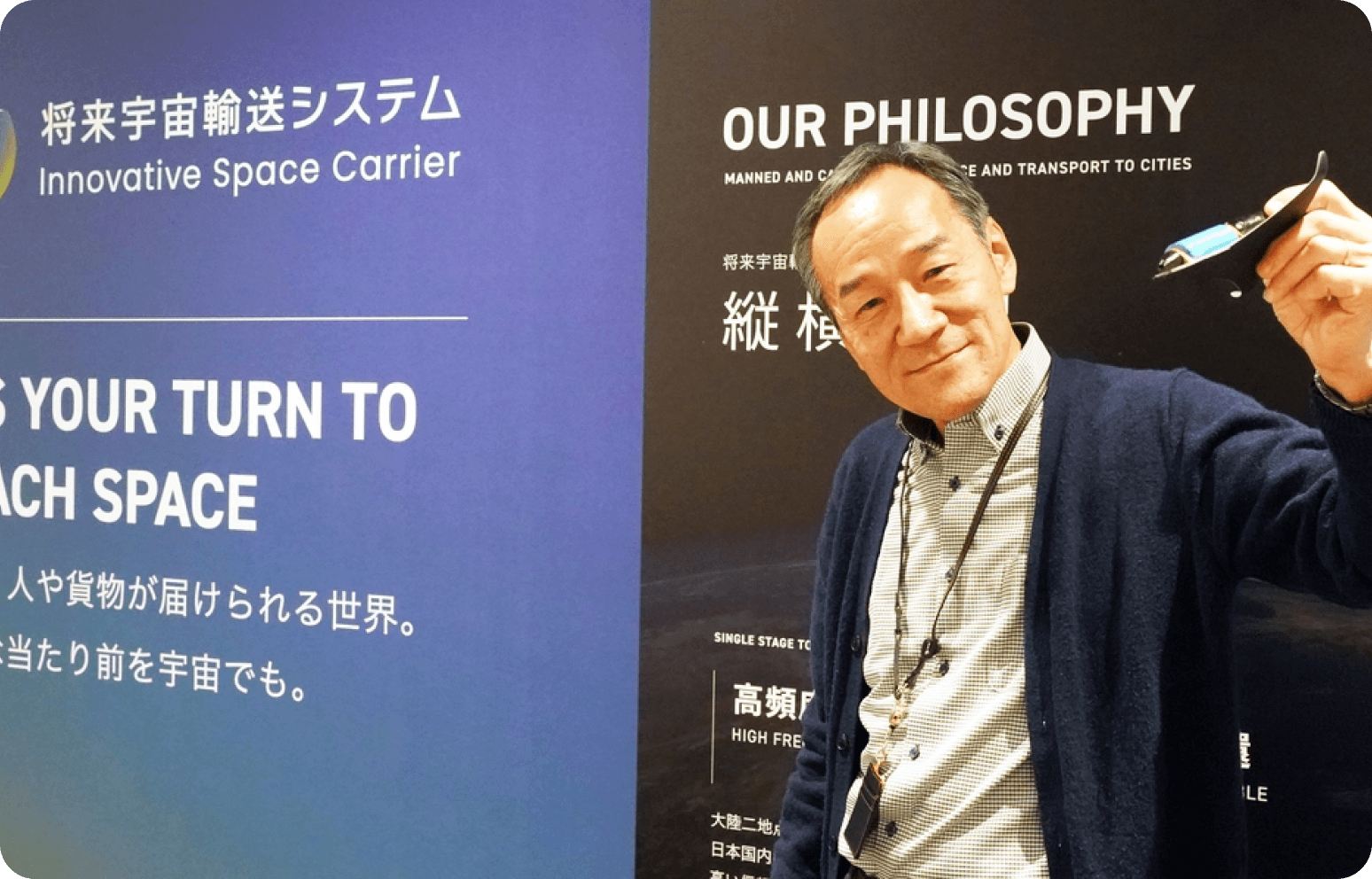1. About Hirakawa's career
- First of all, could you give us some background on your desire to pursue a career in space systems?
I have been impressed by and admired flying planes since I was a child, and I became interested in aeronautics work with a mixed feeling of "just because I like it," and entered the Department of Aeronautics and Astronautics at Tokai University.
At the university, I was mainly involved in the development of rockets, and in addition to launching scientific observation rockets in collaboration with the University of Alaska, we also launched rockets in Taiki Town, Hokkaido, and in Noshiro City, Akita Prefecture. I had always wanted to create a "human vehicle" like an aircraft, so after graduating from university, I joined the Aerospace Company of Fuji Heavy Industries (now Subaru).

- Tell us about your career after you entered the workforce.
After joining Fuji Heavy Industries, I was engaged in aircraft design, which was my dream. I was mainly in charge of structural strength design and strength testing, and designed passenger aircraft such as the Boeing 787 and 777X, as well as aircraft for the Ministry of Defense.
After working for FHI for 11 years, I began to feel uneasy about my career, which had only been involved in aircraft design. I started to think about changing careers and asked myself, "Can't I take what I have and use it in another industry?" I began to think about changing careers and joined a start-up company, Advanced Mechanics Simulation Laboratory. There, I used my skills in strength design and analysis to provide analytical support for designs in the automobile and playground equipment industries.
Later, after experiencing the success of my abilities being useful at a start-up company, I wanted to take the next step and joined the aero engine division of Honda, my previous employer. Few Japanese aircraft are made in Japan, as few domestic companies have the experience to obtain certification from the U.S. Civil Aviation Administration to fly in the sky. Honda, on the other hand, had obtained certification, albeit jointly with an American company, and I was excited to be involved in the world's forefront design in aero engines. As for my work, I was involved in the maintenance and improvement design of aero engines and the design of a hybrid engine for a flying car called eVOTL. In particular, I was the leader of a team that examined whether engines rotating at nearly 1,000 revolutions per second, called vibration shock, would not fail due to vibration, and whether they would function as expected even when birds and hail were inhaled. This was the end of my career before joining Future Space Transportation Systems.
- What is the pleasure of working for a space transportation company?
I have to tell you, rocket launches are crazy exciting! (When I was in college, I witnessed rocket launches on site. I remember the moment I looked up to see the rocket being launched into the sky with an explosive sound, I felt as if all my diligent activities and hard work had been rewarded. The rocket launch was an experience that changed my perspective on life 180 degrees, and I would recommend it to readers, whether they are creators or not, to watch it at high volume, even if it is on YouTube (laughs).
- What was the deciding factor in your decision to move from a large company to a future space transportation system?
I wanted to create a space transportation vehicle that would carry many people. In the world, many private citizens are now going to space. On the other hand, in Japan, there has not been much talk about building a rocket that can carry people, and I felt frustrated. When I heard from Mr. Hatada, our CEO, that he was going to create the systems necessary for a human space vehicle, I thought, "I really want to take on this challenge! I thought, "I really want to take on this challenge! I also thought that in the future, when Japan achieves human space transportation, I will be very disappointed if I am not involved in it, so I decided to change jobs. Now, when I think about the possibility of making it easier for people to go to space, I enjoy my work so much that I forget about time and think of ways to make it easier for people to go to space.
2. Initiatives in Innovative Space Carrier Inc.

- What is your future work with Space Transportation Systems?
I am now mainly responsible for reliability and safety studies for human transportation. I am also involved in orbit injection analysis, structural studies of space vehicles, and if necessary, documentation work. To be honest, we are still understaffed as a company, so my job is to do general engineering plus extra work (laughs).
- How do you plan to develop your organization and business in the future? What challenges, if any, do you face?
Again, we are still a small and just-started organization, so we have a lot of challenges ahead of us. As we move into the design phase of a space transportation vehicle, we are short of people who are familiar with thermo-fluid relations, who can design, who are familiar with manufacturing methods, and who have knowledge and experience in assembly.
There are also issues related to reliability and safety, which are unique to human, as well as issues such as researching trends in the U.S. and Europe.
Monetization of the project is also an important issue. Since we are working to develop and operate the human space transporter as Phase 1 in the late 2020s, there will be a gap of 5 to 7 years before we launch this project (start the project, really launch it). In order to keep running this marathon, securing funding is essential, and in order to accelerate the process toward achieving our goal, we will also need a separate initiative to make it a business.
3. The company's culture and the type of people we are looking for

- There are many challenges to the unknown, but do you feel progress is being made?
Now, I feel that we are making steady progress. Development of space transporters is often based on meticulous planning and design, and to be honest, the speed tends to be slow. One of our members is Nomura, who has experience as a CTO in the IT industry, and he is working at the same speed as in the IT industry. Compared to large companies, I would say the speed is 5 to 10 times faster.
For example, tasks that would be planned in one to two weeks at a large company are divided into two to three days at our company and are carried out with a sense of speed. We also believe that flexible creativity is one of our unique strengths. We can think of a new technology that would be interesting if it could be used in space, or we can think of a new way to use it. "Wouldn't it be interesting if we could use this technology in space? or "Let's look at it from a higher perspective," we are often conscious of looking at things differently and from a broader perspective. For example, I propose to use machine learning to measure a large amount of data, or to utilize systems engineering to increase the speed of verification, and to make thorough use of outsourcing.
The characteristic of "not being bound by means, but creating with a sense of speed to meet challenges" is a unique strength even within our industry. We are proud of our culture, which is quite good for operating as a pioneer of the unknown.
- What kind of people will be needed in the future to develop the business?
We would like to work with people who can think about "Why", "What", and "How" from a zero-based perspective and act on their own initiative. It is easy to get caught up in the existing way of proceeding, but I would like to work with people who can think about whether it is necessary in the first place. We would like to work with people who have the courage to say what is necessary and what is not, and who are willing to take the initiative to do what is necessary.
We are also looking for people with specialized skills. In particular, if you have technology related to safety and reliability, we would like you to consider joining our company. In addition, since our space transporters are designed to be reusable, we believe that they will be able to carry more instruments and acquire more data. We will also need specialists to measure and utilize the data.
In addition, it will be important for us to commercialize the developments and knowledge we have gained along the way to the launch of our transports. Therefore, we hope that people with an interest in space and who can incorporate space development into their business will also consider joining us. For example, a person who can organize a tour to explore the prototype, a person who can design an experience to deliver an exciting experience through the tour, or a person who can make a video of space development activities and upload it to YouTube for publicity and revenue generation, will be able to utilize the knowledge of a diverse range of human resources.
Regardless of the field, the qualities we are looking for are "speed and out-of-the-box creativity. We look forward to hearing from you if you have an interest in space and are willing to work aggressively!




